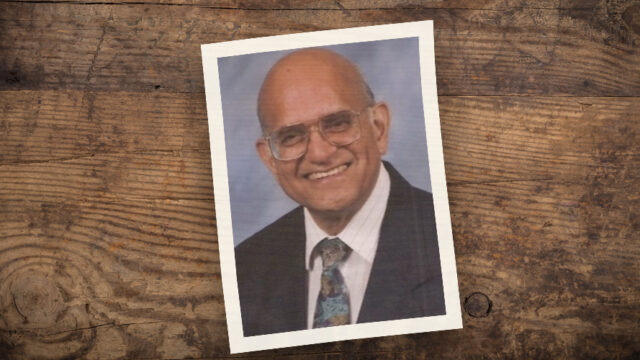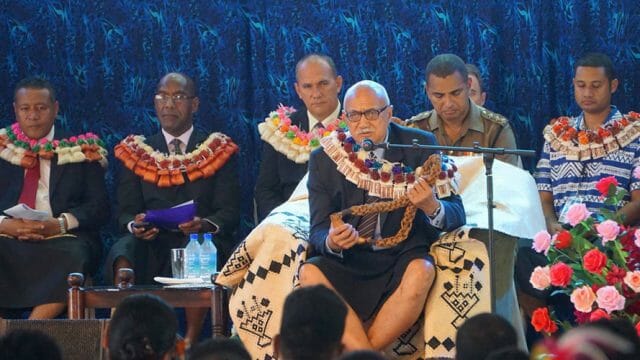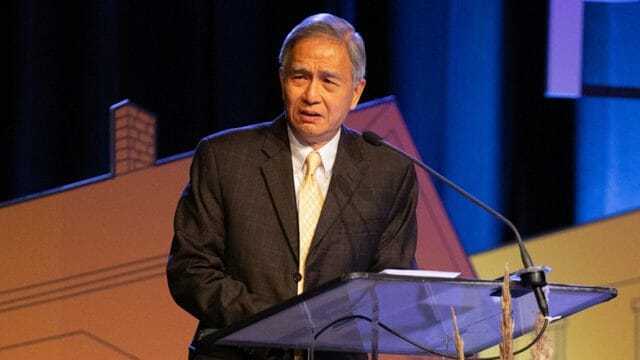Number of church schools in the region surges from 14 to 48 in five years.
A Seventh-day Adventist businessman made a good living in western Ukraine, and he wondered how his wealth could be used to improve his hometown, Tiachiv.
He bought thousands of copies of Ellen White’s Steps to Christ, a best-seller by one of the church co-founders, and distributed them to every home in the town of 9,000 people. Then he did the same with the books The Desire of Ages and The Great Controversy.
The local Adventist church enjoyed a good local reputation, and its membership grew to 70.
But the businessman, Stepan Dordyai, thought, “What else can I do?”
One day, he mentioned his conundrum to Vladimir Tkachuk, education director for the Adventist Church’s Euro-Asia Division, whose territory includes Ukraine and much of the former Soviet Union.
Tkachuk replied, “Schools are one of the best ways to reach the world these days.”
The businessman gazed steadily at Tkachuk. “I have a building,” he said. “That’s exactly what I want to do.”
In just three months, Dordyai transformed a factory building into an attractive three-story school with a beautiful sports field. The Happy Place Seventh-day Adventist school opened its doors to 36 children in September 2016.
This year, enrollment at the school, which teaches grades 1-4 and has a preschool, doubled to 70 children, filling the classrooms to capacity.
The sports field is one of the finest in town, and other schools send their children to participate in friendly matches. Each time visitors arrive, the Adventist principal announces, “This is a special school. We study the Bible here and do not curse. So, before we play, would you like to memorize a short Bible verse?” The children respond with a loud cry, “Yes!”
On a recent day, the children eagerly memorized John 10:10, where Jesus says, “I have come that they may have life, and that they may have it more abundantly” (NKJV).
“The children quickly learned it and then repeated it,” said Tkachuk, who was present and recounted the events surrounding the school. “Then they played.”
Forty-five miles (75 kilometers) away, a much larger Adventist church of 300 members saw the flourishing school and asked one another, “Why can’t we open a school?” So, they opened a school with 22 children in their town, Ilnytsya, this year.
Right Time, Right Place
It is a remarkable story, the one unfolding across the Euro-Asia Division, where the number of church schools has surged from 14 in 2012 to 48 today. The church region is implementing a plan to open 50 schools from 2015 to 2020 and, propelled by enthusiastic church members, appears to be on track to exceed its goal.
“There are many reasons why schools are opening quickly now, but one of the main reasons is it is the right time and the right place for God to fulfill His plans,” said Michael Kaminskiy, president of the Euro-Asia Division.
The Adventist Church established the first Protestant seminary in the Soviet Union when the institution now known as Zaoksky Adventist University opened outside Moscow in 1988.
But compared with other parts of the world, Adventist schools got a slow start in the vast territory of the Euro-Asia Division, partly because of the seven decades of Soviet rule. The first elementary school was opened in 1990 at Zaoksky, followed by a few others in places like Ukraine and Georgia.
“Then a time came when we did not open any schools for a long time,” Tkachuk said in an interview in his office at the Euro-Asia Division’s headquarters in Moscow. “We put a big focus on evangelistic campaigns and not as much on Adventist education.”
That began to change when Guillermo Biaggi, a general vice president for the Adventist world church, put a strong emphasis on schools during his 2010-15 tenure as Euro-Asia Division president. In late 2015, the division under Kaminskiy, then the newly elected president, agreed to establish ten schools annually for the next five years.
“We started very carefully,” Tkachuk recalled. “Local church administrators weren’t ready to run those schools at first. But when they saw that schools brought new life to the local churches, they began to want schools.”
Enthusiastic Church Members
Entire church conferences have vacated their headquarters to provide space for new schools. In Chernovtsy, Ukraine, the Bukovinskaya Conference turned its headquarters into a school, and leaders moved their offices into a local church building. Thirty children showed up the first year, and the school’s enrollment now tops 200 students.
In another Ukrainian city, Lviv, the Western Ukrainian Conference converted its three-story headquarters into a school and also moved into a church building.
Inspired by Ukraine’s example, the Adventist Church in Moldova is remodeling its headquarters in the capital, Chisinau, in preparation for a new school in 2018. Church leaders will move into a smaller building nearby.
Lay members are also excited. A woman took an eight-hour flight to Moscow from the far eastern Russian city of Vladivostok in late October to consult with Tkachuk on how to open the first local Adventist school.
“When people hear that the schools are offering life, hope, and a future, and when they see children running to our schools because they want to go there, they say, ‘We want to open a school, too!’” Tkachuk said.
Ten schools opened in 2016, and eight more opened in 2017. Tkachuk expects to see at least 30 new schools in 2018 and 2019, surpassing the regional goal.
“When we make a plan, pray, and work, God answers with more than we expect,” he said. “But prayer without work is the same as work without prayer. God wants us to be out in the field working even before we reach the ‘amen.’”
An original version of this story was posted on Adventist Mission.








